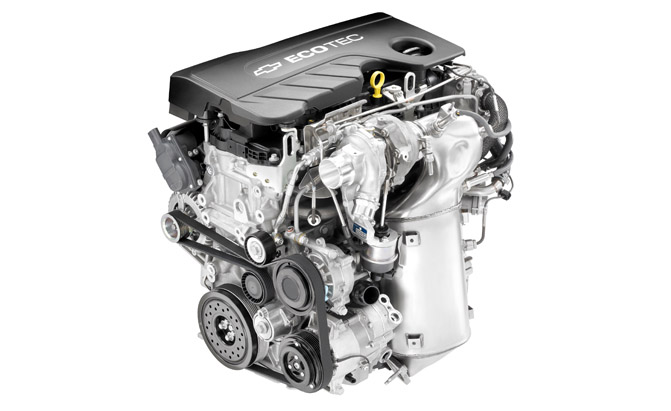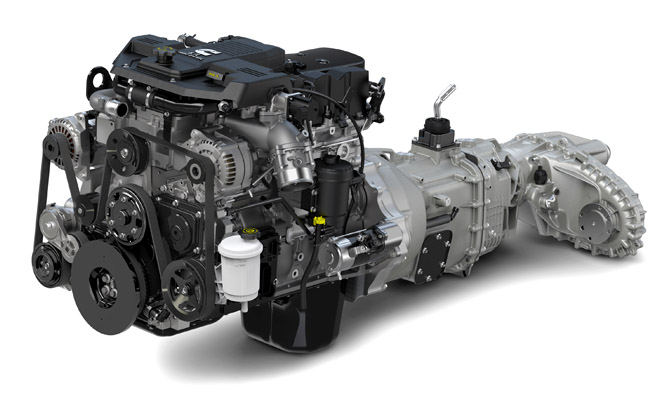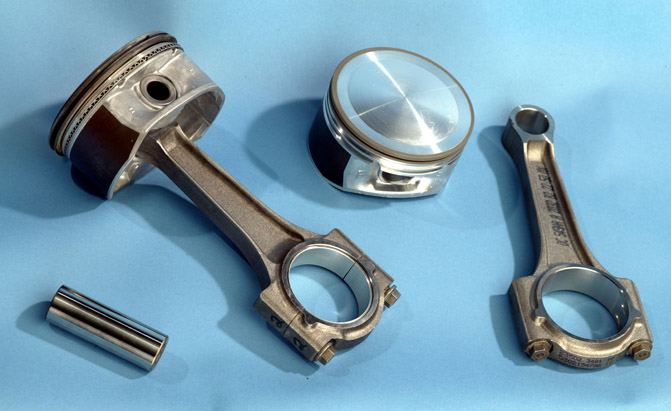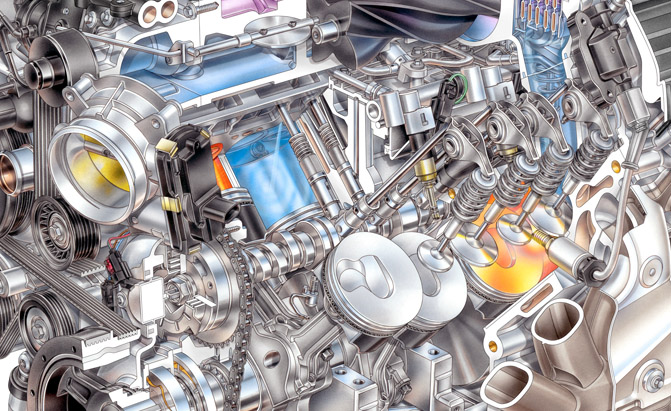So, you just bought a car, something showroom fresh with fewer miles on the odometer than a new pair of shoes.
Naturally, you’ll want to do everything you can to protect this investment. Properly breaking the engine in will do its part to help ensure a long and trouble-free life.
But opinions differ on how this should be accomplished. Some experts advocate performing a hard break-in. This includes a certain amount of heavy acceleration during the vehicle’s first few miles. The goal of this is to force piston rings against cylinder walls so these metal parts can seat before the bores’ honing marks are worn away. Done properly, this supposedly results in an engine that produces more power and lasts longer.
Take it Easy
Alternatively, most others recommend taking it easy for a while, including many automakers. According to Michael Siegrist, assistant chief engineer of the new 1.6-liter turbo diesel engine in the Chevy Cruze and the man in charge of all GM’s passenger-car compression-ignition engines in North America, “Most of our vehicles ask that you do a 1,500-mile break-in.”
This encompasses several things. “Don’t drive a constant speed,” said Siegrist; try to vary the engine’s RPM frequently. He also added, “Don’t go over 80 miles an hour,” and “no full-throttle starts.” It’s also prudent to avoid exceeding 4,000 RPM. Sorry Corvette and Camaro owners, the break-in period is a no-fun, burnout-free, racing-exempt zone.
SEE ALSO: How the 2017 Chevy Cruze Diesel Gets 52 MPG
But in the long run, your patience during those first 1,500 or so miles will likely be rewarded. “What’s really going on,” explained Siegrist, “[Is] you have machined parts with sharp edges that during that break-in period, we’re lapping in those sharp edges so that they fit perfectly for the life of the engine.” He said internal combustion powerplants would operate fine with roughly machined components, but things improve after those moving parts get comfortable with one another. “Once you do that, you’re good forever,” he added.
It’s a similar situation with Toyota. For its Highlander crossover at least, the Japanese automaker recommends right in the owner’s manual that customers avoid sudden stops or towing for up to the first 500 miles. After that, driving extremely fast, suddenly accelerating or running at a constant speed for prolonged periods are discouraged.
Ready to Run
Naturally, suggested break-in procedures vary from one manufacturer to another. Generally, they seem to advocate taking it easy, but that’s not the case with every automaker. David M. Goggin, marketing communications director at Cummins, a major manufacturer of diesel engines, said, “We have no special break-in procedures,” a policy he estimates the company has had for a decade or more. “[Just] get in and drive it.”
Goggin noted that with Cummins’ current manufacturing capabilities and the tolerances they’re able to hold, plus superior lubricants and better materials obviate the need for a special break-in. Additionally, during engine testing, “We can tell if there’s something wrong,” he added, and hold back a certain powerplant if it’s not ready to hit the ground running from day one.
Another vehicle class where taking it easy might not be recommended is in the performance market. Mike Schropp, engine supervisor at Livernois Motorsports, a company that offers engineering services, vehicle performance products and more said, “Most of the engines we build here would be high performance and/or racing-style engines.” Accordingly, “The break-in process is pretty critical.”
SEE ALSO: Everything You Wanted to Know About the Shelby GT350’s Engine
What does Schropp recommend? Well, he advocates customers use the right-most pedal a little more aggressively than some OEMs, but only to a certain point. “Medium load to medium-heavy load is really the best,” he said. This corresponds roughly to between 30 and 60 percent throttle.
Of course, Schropp cautioned the importance of not overdoing things. “There are people that… want a really hard break-in,” he said, but extremely high loads and temperatures are not desirable, so be judicious with the accelerator.
Additionally, Schropp stressed the importance of avoiding extended idling, which can glaze cylinder walls, preventing the rings from properly seating. For this reason and more, it’s critical to vary engine speed during the early miles after a rebuild.
“The rings themselves actually oscillate on the pistons,” said Schropp. Varying the RPM, accelerating and decelerating “allows the rings to move and cycle” for an optimal seal.
What About the Oil?
Further ensuring a proper break-in, Livernois Motorsports puts special oil in all its rebuilt engines. This is just another way of ensuring they offer the best product possible to their customers.
For factory-fresh vehicles, this usually isn’t the case. Accordingly, Schropp recommends early oil changes to help flush any undesirable metallic bits out of an engine’s vital circulatory system. A lot of that cruft is “going to get caught in the oil filter,” he said, but still, “I would change it after the first thousand miles.”
The same isn’t necessarily true for automakers. “We manufacture all or our engines with the oil we want it broken in with,” said Siegrist, lubricants that he suspects are not specially formulated to help with this process. Additionally, he noted that a more frequent lubrication service schedule is not necessary. “Just follow the oil-life monitor,” which is built into GM vehicles.
SEE ALSO: Should You Use Synthetic Oil in Your Vehicle?
Still, you can never harm an engine by changing the oil too frequently. Early service like this, while probably wasteful of money, can only benefit vehicle longevity.
Another thing that could speed this process along is avoiding synthetic oil. Schropp recommends this since you need a certain amount of friction between moving parts for them to wear together properly. Man-made lubricants generally allow less of this than their mineral equivalents.
Final Thoughts
So, if you just had a high-performance rebuilt powerplant installed in your cherished 1970 Plymouth Road Runner, listen to the engine builder’s advice.
Likewise, as you drive off the lot in a factory-fresh car, crossover or pickup truck, it’s probably best to follow the automaker’s specific break-in recommendations. Siegrist emphasized that new-vehicle buyers should read their owner’s manuals because everything is “spelled out exactly what to do.”
And curiously with many GM vehicles, whether it’s a tiny Buick Encore, a diesel-powered heavy-duty Sierra pickup or even the ridiculously fast Camaro ZL1, Siegrist said the break-in guidelines are largely the same. “Everything from an LT4 that goes into a Corvette or a little one-four turbo that goes into a Cruze, to our diesel, the loads in those engines vary dramatically.” But he added, “We’ve kind of iterated to… a common approach to the break-in.” As always, your mileage will vary.












